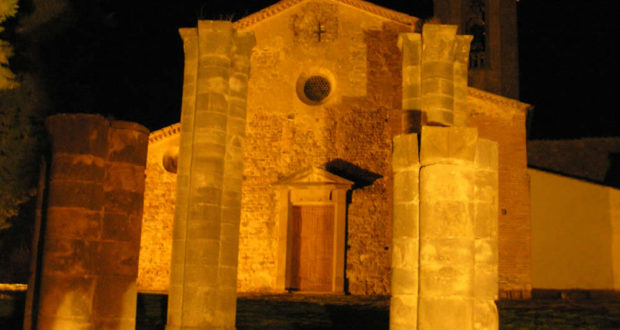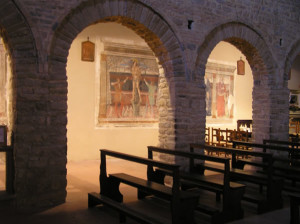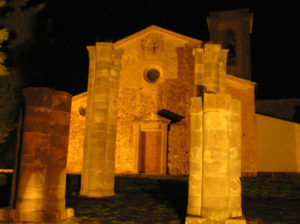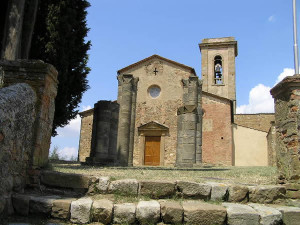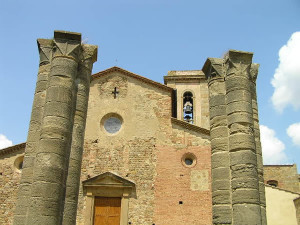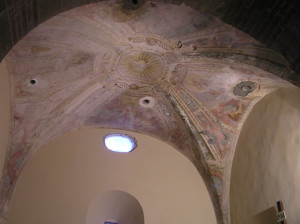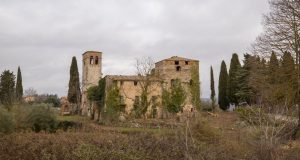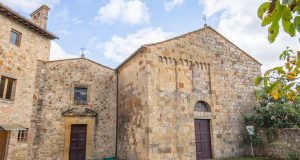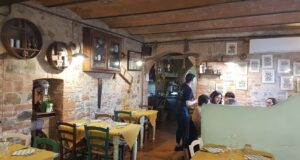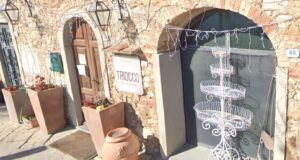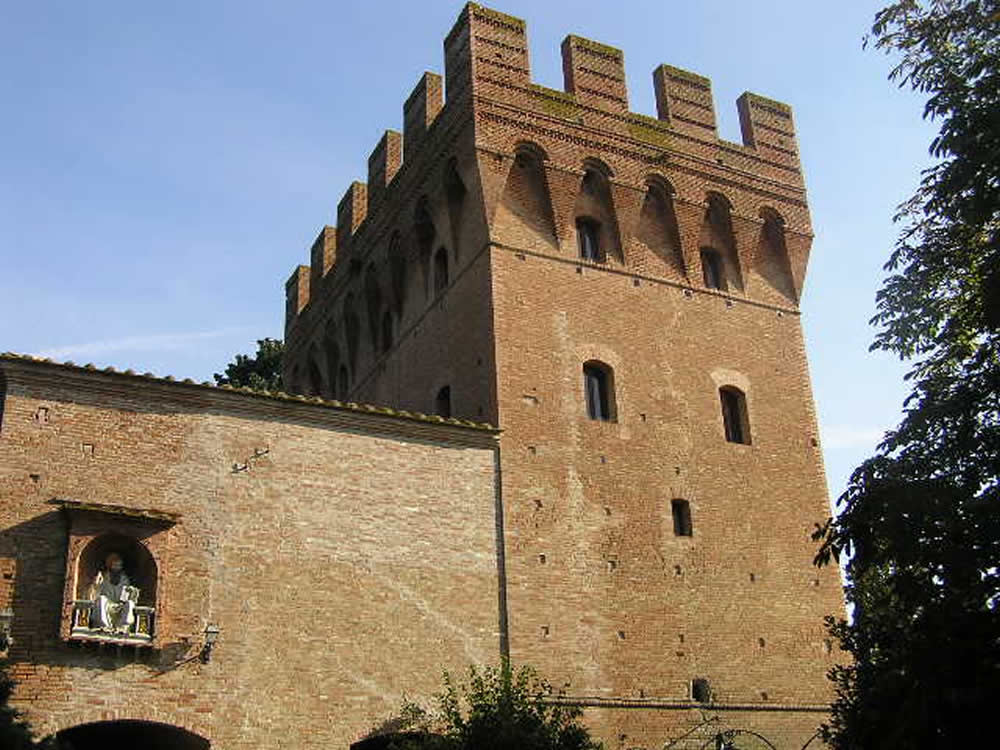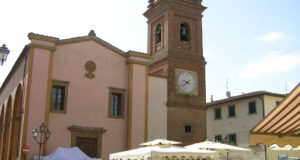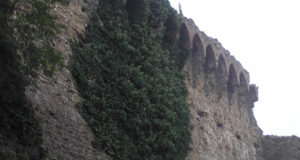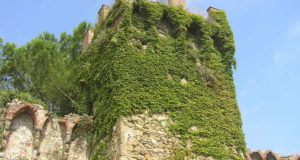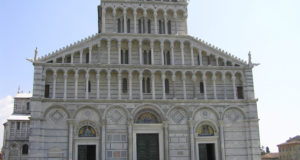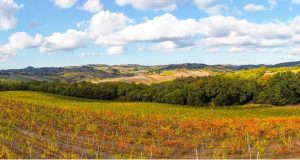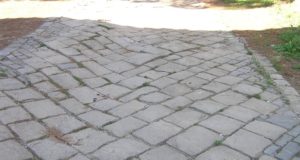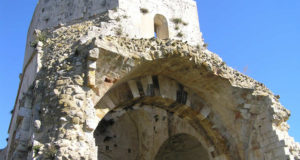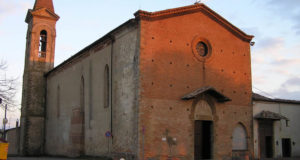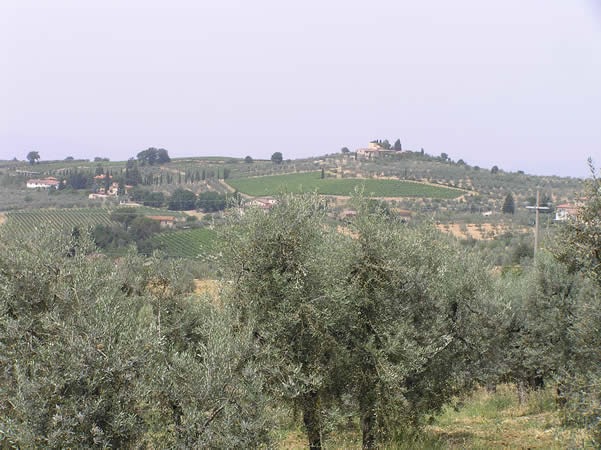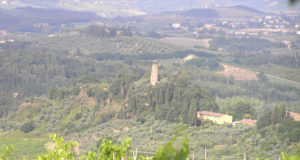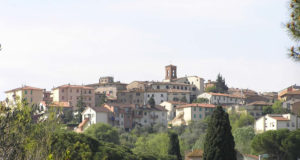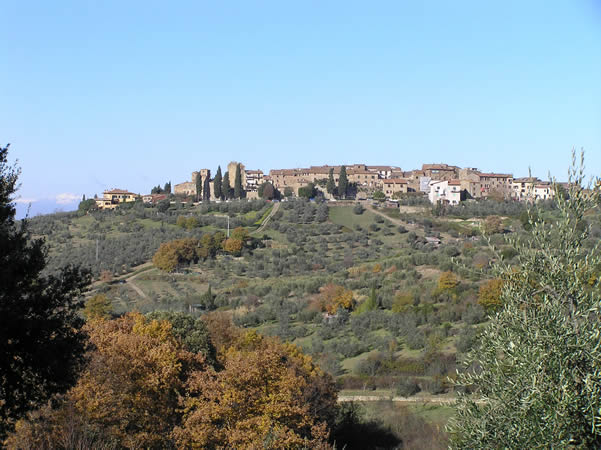![]() Français
Français ![]() Deutsch
Deutsch ![]() Español
Español ![]() Italiano
Italiano
To reach the Pieve of Sant’Appiano from Barberino Val d’Elsa, coming from Tavarnelle Val di Pesa you through the entire village of Barberino and near the end of the village turn right towards Linari, after about one km, turn left to Sant’Appiano-Linari, still a 1 km and you reach the Pieve of Sant’Appiano.
AN ANCIENT ROMANIC CHURCH IN VAL D’ELSA
The existence of Sant’Appiano can be traced starting from the Etruscan-Roman period (seems that a a little temple was situated where are now the rests of the Baptistry), then with the ruins of the Baptistry and at finally with the Romanesque Pieve where the rests of Sant’Appiano are conserved, the saint lived here in 4th-5th century and that give the name to the village that before was called Monteloro.
The complex is constituted from the church, with the annexed cloister and the rectory, and from what are the remains of the cruciform pillars of the baptistry, that brings carved in the capitals the Christian symbols. Pieve of Sant’Appiano, it was mentioned for the first time in a document dated 990 a.D. The building, built in 12th-13th centuries, still today maintains its Romanesque structures like the parts in stone of the left aisle, the apse and the cripte. The inside in three aisle with semicircular apse is much evocative.
Among the works conserved inside are a fresco representing the Madonna with the Child, of uncertain dating and attribution, the frescoes (16th century) in the chapel of Assunta, at the base of the bell tower, and those along the walls of left aisle representing San Domenico, the Martyrdom of San Sebastiano, Sant’Antonio Abate and San Matteo Evangelista, made in 1492, to order of Francisco di Dante Catellini, to a florentine painter close to the Ghirlandaio. Outside on the side of the facade are the rests of the ancient baptistry that was damaged from an earthquake in 1805.
ANTIQUARIUM OF SANT’APPIANO
Next to the Church it’s the Antiquarium of Sant’Appiano, that preserve a part of the archaeological material finded in the area. The small museum comprises two rooms in the first room are collected the finds from the digging of San Martino ai Colli, south of Sant’Appiano, where two Etruscan graves were discovered. In the second room are finds coming from two Etruscan graves discoveries in 1973 in podere Piazza, neighbor to Sant’Appiano.
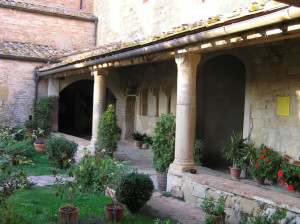
Cloister of the Pieve of Sant’Appiano, Barberino Val d’Elsa, Florence. Author and Copyright Marco Ramerini
Address: loc. S. Appiano 1 BARBERINO VAL D`ELSA (FLORENCE) Phone: 055-8075297 (just during antiquarium opening time) 055 8052231 0558052228 (office culture of Barberino V.E.)
Opening Hours: Summer: Saturday and Sunday, 4.00 pm – 7.30 pm. Winter: Saturday and Sunday, 3.00 pm – 6.00 pm
BIBLIOGRAPHY
- AA. VV. “Firenze e provincia” Guide Rosse Touring Club Italiano, 2007
- Mons. Fiorini, Ferrandino “Sant’Appiano. Un’antica pieve in Val d’Elsa” Poggibonsi, Arti grafiche Nencini, 1997
- Tigler, Guido “Toscana romanica” Jaca Book, Milano, 2006
- The facade of the Pieve of Sant’Appiano and the remains of the baptistery, Barberino Val d’Elsa, Florence. Author and Copyright Marco Ramerini
- Cloister of the Pieve of Sant’Appiano, Barberino Val d’Elsa, Florence. Author and Copyright Marco Ramerini
- The facade of the Pieve of Sant’Appiano and the remains of the baptistery, Barberino Val d’Elsa, Florence. Author and Copyright Marco Ramerini
- Pieve of Sant’Appiano, Barberino Val d’Elsa, Florence. Author and Copyright Marco Ramerini
- The facade of the Pieve of Sant’Appiano and the remains of the baptistery, Barberino Val d’Elsa, Florence. Author and Copyright Marco Ramerini
- Pieve of Sant’Appiano, Barberino Val d’Elsa, Florence. Author and Copyright Marco Ramerini
 Borghi di Toscana Guida ai borghi e ai paesaggi della Toscana
Borghi di Toscana Guida ai borghi e ai paesaggi della Toscana
